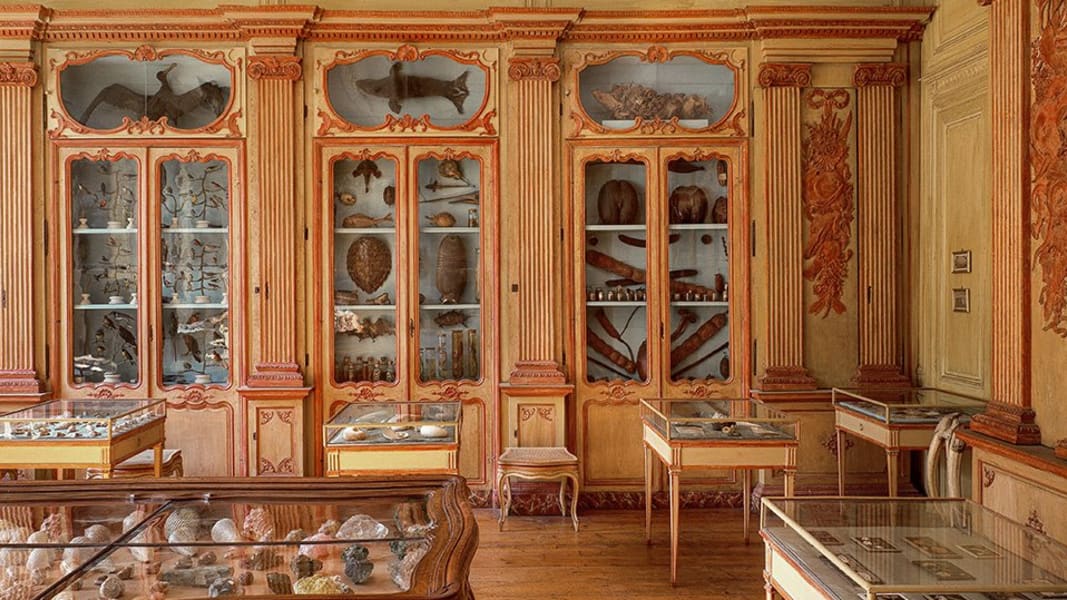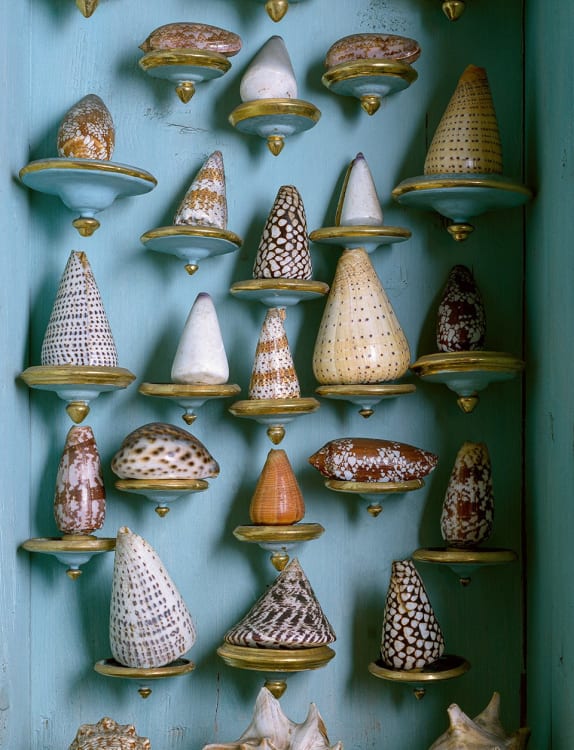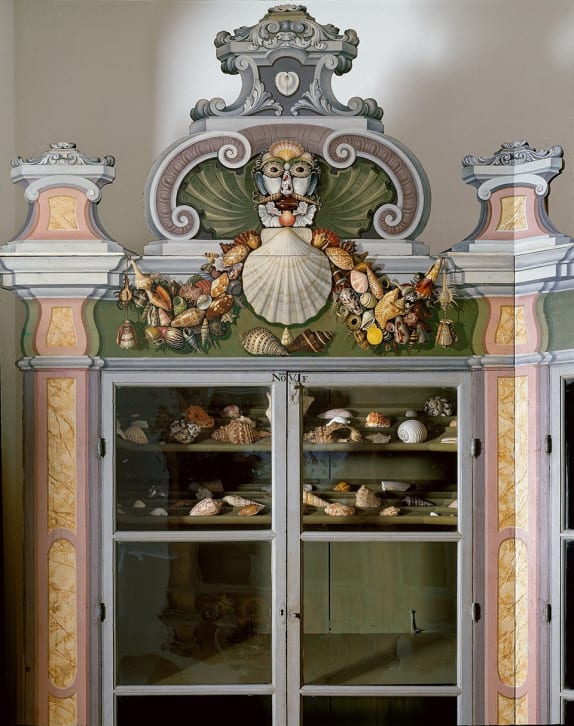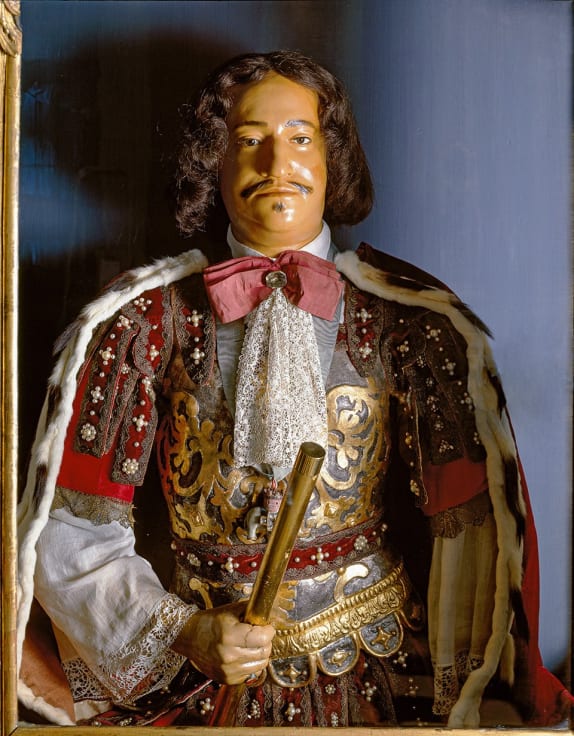Cabinets
of Curiosities
Hidden treasures, dreams of universal
knowledge, and exquisite beauty


The rich treasures of Renaissance cabinets of curiosities
Updated 2nd April 2020

Written by Antonio Paolucci, CNN
Antonio Paolucci is an art historian and curator. The following are edited excerpts from the new book "Cabinet of Curiosities," which describe how Renaissance rooms containing wonderful objects were precursors to the modern museum. Photography by Massimo Listri, published by Taschen.
The cabinet of curiosities is synonymous with delight and surprise, with marvels and rare objects, but is also the mirror and representation of the world in its entirety.
Almost, if not quite everything, can be represented in a cabinet of curiosities: visual arts and scientific instruments, astrology and medicine, zoology and botany, gemology and metallurgy, as well as alchemy and the more esoteric sciences.
This is how the philosopher, theologian and utopian Tommaso Campanella (1568-1639) described his "imaginary museum" in his "Città del Sole (City of the Sun)" of 1602. He conceived a building designed and organized to be a temple to the arts and the sum of human knowledge, which would be subdivided in circles.

Arcimboldo figure (17th century). Florence, Pitti Palace, Treasury of the Grand Dukes.
The circles of human knowledge
"Inside the first circle are all the mathematical figures," Campanella writes. "On the outside of the building is a map of the whole world, with a table for every country, describing its rituals, customs and laws, and with our alphabet displayed above theirs.
"Within the second circle are all the precious and non-precious stones, and minerals and metals, real and painted.
"Inside the third circle are illustrations of all the various types of herbs and trees in the world [ . . . ], with their properties described together with their similarities with the celestial bodies, metals and the human body, as well as their medicinal use.
"Inside the fourth circle are illustrations of all the various types of birds with their distinctive traits, sizes and habits, and amongst them the phoenix is very much true to life."
The kind of imagination which, in 1602, inspired Campanella's prose, is the same impetus that generated the culture of the cabinet of curiosities, a phenomenon that spread throughout Italy at this time as well as through the rest of Europe.

Exceptional cowrie shells (Cypraea). Seitenstetten Abbey, The Mineral Cabinet.
The Uffizi Gallery was itself created as a cabinet of curiosities, that is to say a place of wonders. It was originally the Magistrates' Palace, as built by Giorgio Vasari "on the river, almost in the air;" in 1581 Grand Duke Francesco I de' Medici transformed the top floor of the palace into a gallery to house the crown jewels. Bernardo Buontalenti's Tribune has always been both the physical and the symbolic centre of the Uffizi. It was here that the most valuable treasures of the Medici dynasty were kept in order to elicit the curiosity and wonder of the family's distinguished visitors and guests.
Francesco Bocchi provided this description of the Tribune in 1591, in Le bellezze della città di Firenze (The Beauties of the City of Florence): "At the heart of the Gallery is a dome, called by everyone 'the Tribuna', divided so that it has eight sides and with a diameter of 10 braccia, designed by Bernardo Buontalenti and which is most beautiful."
These included a head of Julius Caesar "made of precious stone, which is blue, and most beautiful in its artifice", and which was beyond all comparison in "the value of its extraordinary manufacture"; a "mound of pearls and jewels" made by Grand Duke Francesco himself; and a turned ivory globe incorporating six ovals of pure ivory with the portraits of the Duke of Bavaria, his wife and children.

Pediment with a mask in the style of Giuseppe Arcimboldo (c. 1730s). Halle, Francke Foundations Chamber of Art and Natural History.
Pitti Palace
However the most beautiful and most important cabinet of curiosities in Italy is in the Pitti Palace in Florence. In the northern part of the palace, known as the "Summer Apartment", is the Tesoro dei Granduchi, the "Treasury of the Grand Dukes", an extraordinary assemblage of rare and precious objects.
In the great reception hall exquisite frescoes as luminous as silk tapestries, by Florentine painters of the Baroque period such as Giovanni da San Giovanni and Francesco Ferrini, illustrate the glories of the House of Medici and the destiny of Florence itself, which, following the Turkish occupation of Constantinople, became the new Athens, a beacon of civilisation and culture for the whole world.
The frescoes immortalise Lorenzo the Magnificent, surrounded by the artists and intellectuals of his circle as embodied by Marsilio Ficino and the Platonic Academy. The Great Hall by Giovanni da San Giovanni is the heart of the Tesoro dei Granduchi.

Wax bust of king Frederick III (1751) by Louis-Augustin le Clerc. Copenhagen, Rosenborg Slot.
Cabinets of curiosities today
It is fair to ask whether the notion of the cabinet of curiosities still exists in the imagination and aspirations of today's collectors, and whether the impulse behind such omnivorous, extravagant collecting has survived until the present.
The answer is yes. When we look at Alessandro Orsi's collection in Azzate in Varese, or the collection of glyptic art in Guy Ladrière's gallery in Paris, or the ancient ivories in the Kugel gallery, also in Paris, there is no avoiding the conclusion that the impulse behind the historical creation of the great European collections of mirabilia has not been extinguished.
Overwhelmed by the clamor of advertising and the fickle trends of the market, the private collector of today struggles to achieve the mindset required for the patient, meticulous pursuit of things, the things we fall in love with and which make us happy to own. And yet it is this attitude, and no other, that we must encourage and support.
"Cabinet of Curiosities" is published by Taschen and is available in May.









